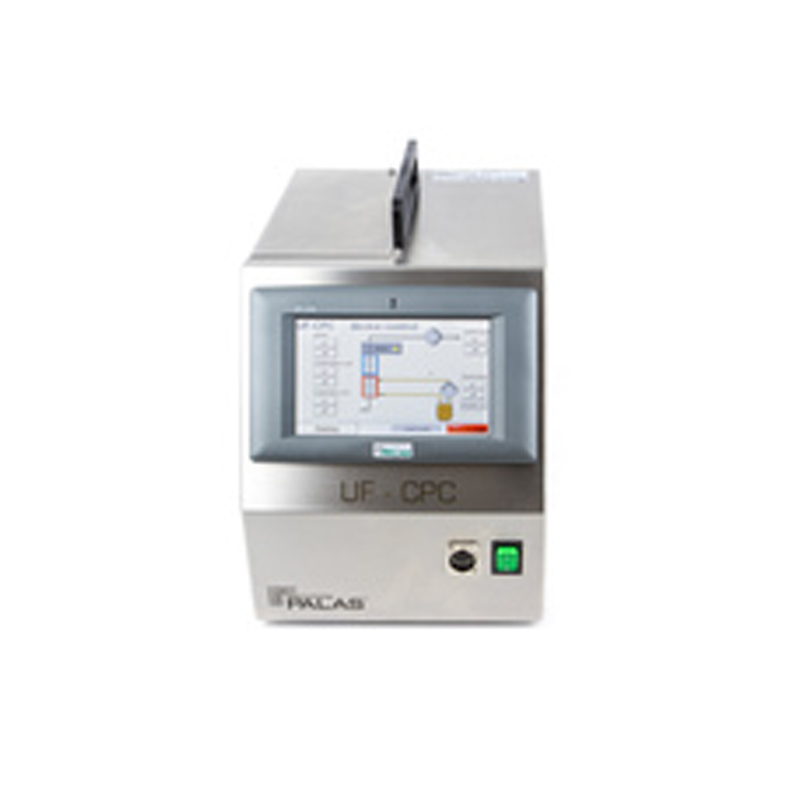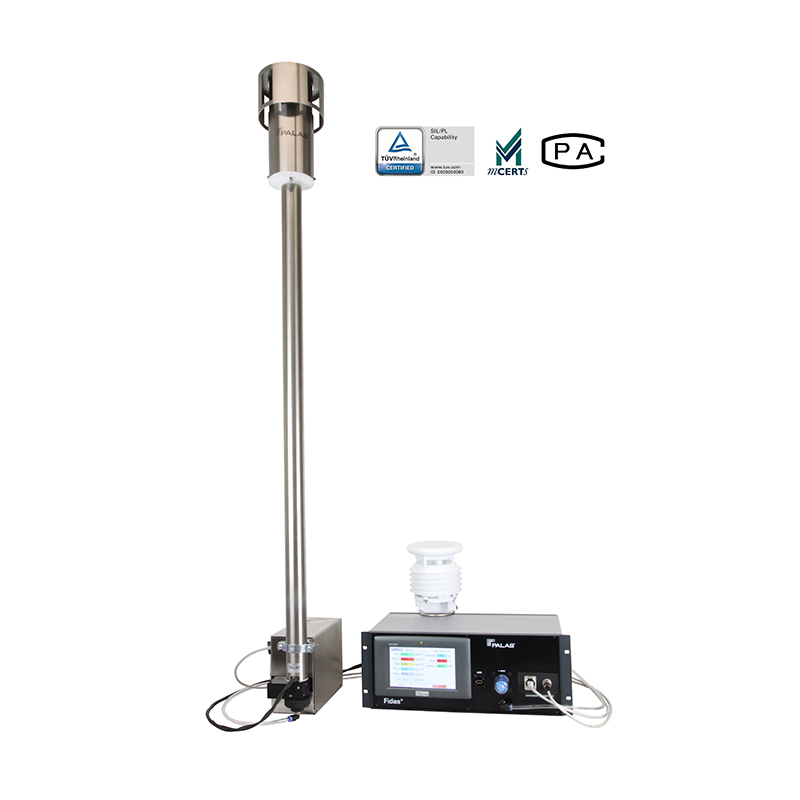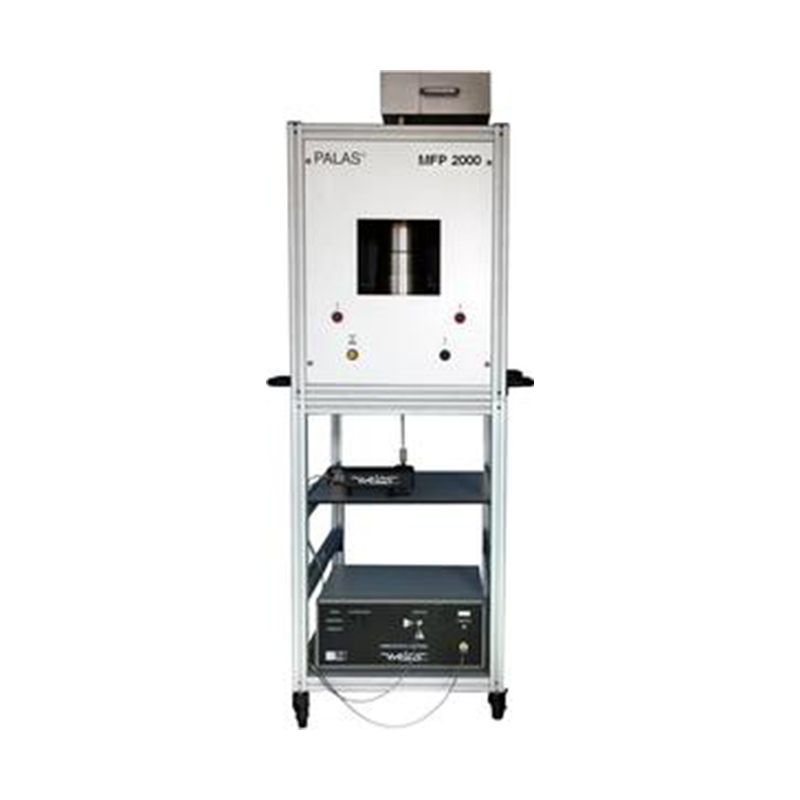Description
The Palas® UF-CPC 50 condensation particle counter is optimized for low concentrations (e.g. downstream from a filter medium or in operating rooms).
The UF-CPC 50 measures the total particle concentration of ultrafine and nanoparticles suspended in air or other carrier gases. These particles are enlarged by a condensation process in order to enable the precise determination of their number with an optical light scattering detector. The working fluid, e.g. butanol or water, is vaporized as a condensation agent. The nanoparticles to be measured are directed through the vapor atmosphere, during which the vapor condenses on the nanoparticles in a cooling zone. The condensation process is influenced by the nanoparticles themselves, as well as the working fluid, the operating temperatures, and the volume flow.
In addition to their number, the UF-CPC 50 also measures the size of the droplets and provides the user with additional information concerning the condensation process. This novel and patented (German patent no.: DE 10 2005 001 992 A1) working fluid delivery system provides greater flexibility. The user is no longer limited to butanol or water but may also opt for more environmentally friendly or better suited working liquids for special applications, in addition to the butanol and water.
In addition, the modularity of the components enables the user to perform most maintenance tasks (e.g. cleaning, pump replacement).
In research mode, the user is able to easily adjust a variety of parameters, e.g. temperature settings on the saturator, using the 7″ touch screen.
For process control applications, the UF-CPC supports a standardized interface with various protocol options, e.g. Modbus, and provides features, such as remote access and data storage on the Internet or an internal network.
Figure 1 presents the principle of operation of the UF-CPC [1]. The aerosol with nanoparticles enters the UF-CPC at the bottom and reaches the heated evaporation chamber – the saturator first.
Within the saturator, the working fluid is moved helically around the flow area of the aerosol, resulting in a more homogeneous contact area compared to designs where only one or two walls of the saturator are lined with a porous material that is soaked with the working fluid
In addition, the working fluid is circulated continuously from the reservoir to the constantly heated helical and U-shaped channel and back to the reservoir at a flow rate that can be adjusted to accommodate different working fluids.

Fig. 1: Principle of operation of the condensation particle counter (UF-CPC)
Downstream from the evaporation chamber, the aerosol and the saturated carrier gas enter a cooled area, the condenser, in which the working fluid condenses onto the nanoparticles, forming droplets in the μm size range.
Downstream from the condenser, the droplets enter the optical sensor. Here, the size of the droplets is analyzed and their concentration is measured by counting them. Unlike other CPCs, the sensor on the UF-CPC uses a patented technology to count particles at concentrations of up to 107 P/cm³ without diluting the aerosol.
Software
Based on continuous customer feedback, the user interface and software have been designed for intuitive operation and real-time control of measurement data and parameters (Fig. 2) In addition, the software provides data management with the integrated data logger, sophisticated export capabilities, and network support. The measured data are able to be displayed and evaluated with many available options. If a specific display is desired, we can implement it for you.

Fig. 2: Touch screen user interface showing the device status
References
[1] Patent: DE 10 2005 001 992 A1




